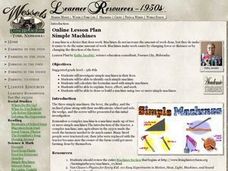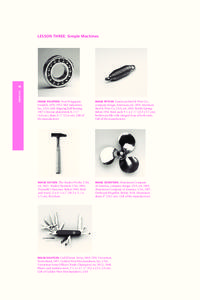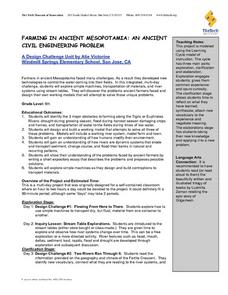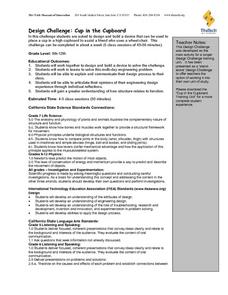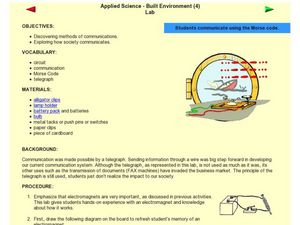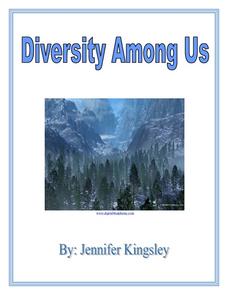Benjamin Franklin Tercentenary
Simple Machines, Ben Franklin and the Technology of the 1700s
Benjamin Franklin was an inventor, and he was fascinated by the mechanics of machinery. Using a fun exploration, pupils examine simple machines from the pre-Industrial era. Then, they must identify and build their own using common objects.
Curated OER
Simple Machines
Here is a good four-page worksheet designed to get your young inventors thinking about a simple machine they could design and build. They must answer some basic questions about their machine, draw a sketch of their idea, and write a...
Scholastic
It's a Whatchamacallit
Learners formulate new applications for simple machines in an original invention that solves a common problem. They brainstorm ideas for a new product using simple machines and communicate a finished project through an oral,...
Curated OER
A Simple Machines Activity
Fourth graders observe examples of simple machines found in the school, playground, and work environment. In this simple machines instructional activity, 4th graders review simple machines by viewing three web sites. Students tour the...
Curated OER
Simple Machines
Students research simple machines. In this simple machines lesson, students explore the many types of simple machines such as the lever, pulley, and screw. Students discover simple machines in the classroom.
Curated OER
Modern Day Pyramids
Learners investigate the ways in which ancient technologies - six types of simple machines and combinations - are used to construct modern buildings. As they work together to solve a design problem (designing and building a modern...
Curated OER
Farming in the 1930's
Students research and conduct experiments with several types of simple machines. They examine levers, pulleys, inclined planes, wheels, axles, wedges and screws and then consider the physics behind "Green Eggs and Ham".
Curated OER
Simple Machines
Students design objects in the Museum of Modern Art's collection of simple machines. For this simple machines lesson, students explore the machine age in the MoMA's design collection. Students identify simple machines and the elements in...
Curated OER
Round and Round--Wheels and Axles
In this wheels and axles worksheet, learners read a 1 page article, make a list of how many objects they can find or think if that uses a wheel or axle and then design their own machine.
Curated OER
Connection to Social Studies-The Pyramids
For this simple machines worksheet, students read about the pyramids and the simple machines used to build them. They answer three critical thinking questions about the building of the pyramids.
Curated OER
Machinery In Society
Students explore technology by completing a worksheet in class. For this common machinery lesson, students define the different designs that make simple machines work such as wheels, pulleys and gears. Students utilize verbs to describe...
Curated OER
Changes in Latitudes, Changes in Attitudes
Sixth graders discuss how people, society, and technology change over time through a unit of integrated lessons. In these changes in society lessons, 6th graders discuss the answers to many questions about how changes effect the...
Curated OER
Agriculture in Motion
Sixth graders research machines used in agriculture. In this agriculture lesson, 6th graders complete a variety of activities that involve farming and crops. Some examples include: answering questions, creating a storyboard, poetry, and...
Institute of Electrical and Electronics Engineers
Cast Your Vote
In a simple but unique lesson, youngsters learn about the history of voting systems. They then collaborate in groups to develop a new honest and consistent voting method. A class-wide poll is taken, evaluating the designs of other...
Curated OER
Farming in Ancient Mesopotamia: An Ancient Civil Engineering Problem
Sixth graders identify the major obstacles in farming in Mesopotamia. They work together to design and build a model that solves these problems. They write a short essay that describes the problems and their possible solutions.
Curated OER
Catapults
Students discover the catapult. In this catapult lesson, students research the history of the catapult and how it works. They work in groups to build their own catapult using tootpicks, popsicle sticks, rubber bands, and spoons.
Curated OER
Community Building
Seventh graders discover the similarities and differences between cities, towns, and rural communities. Using a Neighborhood map Machine, they create a Venn diagram and map of their own community. Students build a 3-D representation of...
Curated OER
The Industrial Revolution and Women
Students learn about inventions of the Industrial Revolution and their impact on life. In this Industrial Revolution lesson, students look at how the Industrial Revolution changed the work experience from farms to factories. They tell...
Curated OER
Artifacts
Students learn that articles used by a culture reveal much about life and people's values. They learn the Japanese word to identify some artifacts and some simple games using Japanese toys.
Curated OER
Maps
First graders look at their classroom or school setting. They use positional word to describe where things are located in the school. Students discuss a map and why they are important. They read the story "Taylor's New School" and...
Friends of Fort McHenry
Cannons During the War of 1812
During the Battle of Baltimore in the War of 1812, only 25% of the bombs and rockets fired at Fort McHenry actually reached their target. Using an interactive online simulation, combine your historical study with physics and...
Curated OER
Design Challenge: Cup in the Cupboard
Students design device that will place a cup into a cupboard for a physically challenged person. They study the engineering design and how structure relates to function.
Curated OER
Communication Methods
Students explore communications by participating in a science class activity. In this communication technology lesson plan, students discuss the process of morse code, its history, and the electromagnets used to create the device....
Curated OER
Diversity Among Us
Second graders examine diversity and disabilities that arise in the classroom environment by listening to a read aloud. They watch a slide show that demonstrates differences among students and how to communicate effectively in diverse...






